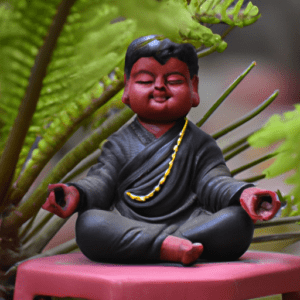Mindfulness is a practice that has been around for centuries and is becoming increasingly popular in modern society. It is a practice that can help to reduce stress, increase focus, and cultivate a greater sense of well-being. Practicing mindfulness on a daily basis can be incredibly beneficial, but it can also be difficult to establish a regular practice. This article will provide you with 6 steps to cultivating a daily mindfulness practice that will help you to make mindfulness a part of your daily routine. By following these steps, you will be able to develop a mindful practice that will bring greater peace and clarity to your life.
Step One: Establish a Routine – Tips for Setting Up a Mindfulness Practice
Setting up a mindfulness practice can be intimidating, but it doesn’t have to be. The key is to establish a routine that works for you. Here are some tips to help you get started:
1. Start small. Don’t try to do too much too soon. Start with just a few minutes of mindfulness each day and gradually increase the amount of time as you become more comfortable with the practice.
2. Choose a time and place. Find a time and place that works for you and make it a priority. This could be first thing in the morning, during your lunch break, or right before bed. It’s important to make sure you have a comfortable and quiet space to practice.
3. Find a practice that works for you. There are many different mindfulness practices to choose from, so find one that resonates with you. You can start with guided meditations, yoga, or even walking.
4. Make it a habit. Once you’ve established a routine, stick with it. Try to practice mindfulness every day, even if it’s just for a few minutes.
5. Be patient. Mindfulness is a process and it takes time to see results. Don’t get discouraged if you don’t feel any immediate changes. Keep at it and you’ll start to notice the benefits.
Setting up a mindfulness practice can be a great way to reduce stress and cultivate inner peace. With a little bit of effort and patience, you can establish a routine that works for you.
Step Two: Identify Your Goals – How to Set Intentional Goals for Your Mindfulness Practice

Setting intentional goals for my mindfulness practice is something I have been trying to do for a while now. It’s been a challenge to figure out what I want to get out of my practice and how to go about achieving it. But I’m determined to make it work.
My first goal is to become more aware of my thoughts and feelings. I want to be able to recognize when I’m feeling stressed or overwhelmed and be able to take steps to manage my emotions. I’m also hoping to become more mindful of my physical body and be able to recognize when I’m feeling tense or uncomfortable.
My second goal is to become more present in the moment. I want to be able to stay focused on the task at hand and not get distracted by my thoughts or worries. I’m also hoping to be able to stay in the moment and appreciate the beauty of life around me.
My third goal is to cultivate a sense of inner peace. I want to be able to take a step back from my thoughts and worries and just be in the moment. I’m hoping to be able to relax and find a sense of calmness and contentment.
Finally, I want to be able to use my mindfulness practice to help me make better decisions. I want to be able to take a step back and look at a situation objectively and make decisions that are in line with my values and goals.
These are my goals for my mindfulness practice and I’m looking forward to seeing how I can use it to help me reach them.
Step Three: Find Your Triggers – How to Identify What Triggers Stressful Thoughts and Feelings
Identifying your triggers can be a difficult task, but it is an important step in managing stress. To start, it is important to become aware of your thoughts and feelings when you experience stress. Once you have identified the thoughts and feelings associated with stress, you can start to look for patterns.
Think about what situations, people, or events cause you to feel stressed. Is it a certain type of person, a certain environment, or a certain situation? Do you feel stressed when you are in a crowded place or when you are in a certain type of situation?
You can also look for patterns in your behavior when you are feeling stressed. Do you tend to lash out at people or become withdrawn? Do you have certain habits or behaviors that you do when you are feeling stressed?
Once you have identified your triggers, it is important to take steps to manage them. For example, if you find that you become stressed in crowded places, you can take steps to avoid those situations or find ways to cope with them. If you find that certain people or situations trigger your stress, you can work on developing strategies to better manage your reactions.
Identifying your triggers is an important step in managing stress. Once you have identified them, you can start to take steps to better manage your reactions and find ways to cope with them.
Step Four: Practice Mindful Breathing – Benefits of Mindful Breathing and How to Do It
Mindful breathing is an incredibly powerful tool that can help us to reduce stress, increase focus, and even boost our overall health. It is a simple practice that can be done anywhere and anytime, and it is one of the most accessible and effective ways to bring mindfulness into our lives.
When we practice mindful breathing, we are focusing our attention on the present moment and our breath. We are allowing ourselves to be fully present in the moment and to be aware of our physical and emotional states. By doing this, we can begin to recognize and release any tension or stress that we may be holding onto.
The benefits of mindful breathing are numerous. It can help us to relax and reduce stress, improve our concentration, and even improve our physical health. Mindful breathing can also help us to become more aware of our emotions and to better understand our thoughts and feelings. It can also help us to become more mindful of our body and to better understand how our physical and emotional states are connected.
To practice mindful breathing, find a comfortable position and begin to focus on your breath. Notice the sensations of your breath as it moves in and out of your body. Allow yourself to become aware of any thoughts or feelings that arise without judgment. When your mind wanders, simply bring your attention back to your breath.
Mindful breathing is a simple yet powerful practice that can help us to become more mindful and to better manage our stress. With regular practice, we can begin to experience the many benefits of mindful breathing.In conclusion, cultivating a daily mindfulness practice can be a rewarding and beneficial experience. It requires patience, commitment, and dedication to the process, but the results can be life-changing. The six steps outlined in this article can help guide you on your journey to developing a daily mindfulness practice. By focusing on your breath, being aware of your thoughts and feelings, engaging in mindful activities, practicing self-compassion, and reflecting on your experience, you can create a meaningful and sustainable mindfulness practice.




